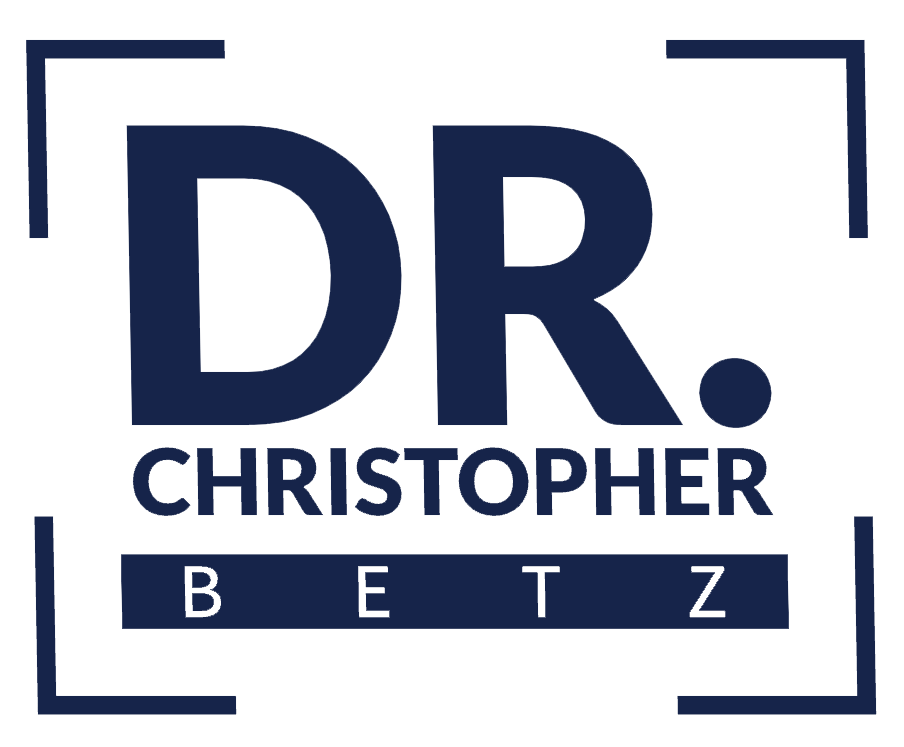HIP
Hip Labral tear
The labrum is a piece of cartilage that lines and reinforces a ball-and-socket joint, like the hip joint. The diagram to the right illustrates how the labrum can tear away from the acetabulum (the socket of the hip bone, where the femur attaches). When this cartilage tears, it can get pinched in the joint or disconnect entirely and become a loose body within the joint.
The hip is a ball-and-socket-joint: the femoral head forms the ball and the acetabulum, which is part of the pelvic bone, forms the socket. The labrum of the hip is a cuff of thick fibrocartilage tissue that surrounds the acetabulum. The labrum helps to support the hip joint and provide stability.
A labral tear occurs when a piece of the labrum cartilage becomes pinched between the femoral head and the acetabulum causing pain and catching sensations. Hip labral tears can result from either degeneration (wear-and-tear) or anatomical abnormalities. Hip labral tears usually affect active adults between the ages of 20 to 40.
- Degeneration: degenerative tears occur with repetitive stress, such as repetitive pivoting and hip flexion.
- Anatomical abnormalities: the most common anatomical abnormality to cause hip labral tears is called Femoral Acetabular Impingement (FAI – for more information please visit the FAI section of this page). The extra boney structure that defines FAI reduces the amount of space within the joint, pinching the labrum between the acetabulum and femoral head.
Labral tears are commonly seen in athletes who play contact sports such as football, basketball, field hockey, and soccer.
Symptoms:
- Loss of range of motion
- Inability/weakness when moving leg across the body
- Inability/weakness when lifting leg
- Pain in the groin area
- Pinching feeling deep within the joint
- Catching/snapping sensation with specific motions
- ‘C’ sign pain – pain in the cross section of the front and outer side of the thigh
- Sensation of instability/looseness
- Pain with:
- Getting into and out of the car
- Going from a sitting to stand position
- Sleeping on the affected side
- Twisting and turning
- Crossing legs while sitting
- Daily activity
If your symptoms last longer than 2 weeks and interfere with daily activity, you should consult your primary care physician for a referral.
What To Expect During Your Appointment:
During your appointment your Dr. Betz will perform a physical exam to test your hip’s range of motion and leg strength. In-office imaging may be done or an MRI may be set up to diagnose the cause of your pain. A specific type of MRI called an arthrogram is used to diagnose labral tears. During the arthrogram, the radiologist will inject contrast dye into your hip joint, making it easier to find small abnormalities within the joint. Once the results of your imaging come back, Dr. Betz will provide treatment options and help you decide the course of action that is best for you.
Treatment
Dr. Betz performs an in-office exam on the patient to check for a labral tear.
Non-Surgical Options:
- Rest
- Medication: non-steroidal anti-inflammatories are often prescribed to minimize swelling and pain.
- Physical Therapy: strengthening the upper leg will help relieve pain and prevent further injury. Stretching is also performed to help regain mobility.
- Injections: If the other non-surgical treatments fail, Dr. Betz can use injections to help reduce pain.
- Steroid Injection (Cortisone): steroids are proven to be very effective at reducing inflammation and pain when injected directly into the joint space.
- Platelet Rich Plasma (PRP): your own blood is used to extract platelet-rich plasma, which is then injected into your hip joint. The platelets within the plasma stimulate the body to repair itself.
Surgical Options:
If non-surgical treatment methods fail to improve pain, Dr. Betz will discuss surgery as an option. Each patient and tear is different, but most tears can be treated arthroscopically. For more information on arthroscopic surgery please see “Arthroscopic Surgery”.
For postoperative patients:
Loose Bodies in Hip
The hip is a ball-and-socket-joint: the femoral head forms the ball and the acetabulum, which is part of the pelvic bone, forms the socket. The labrum of the hip is a cuff of thick fibrocartilage tissue that surrounds the acetabulum. The labrum helps to support the hip joint and provide stability. Surrounding the hip joint are ligaments, tendons, and muscles that control hip movement.
Loose bodies are pieces of cartilage or bone that float within the joint. They are most often the result of sports injuries or acute traumas in young patients. In older patients, they are the result of degeneration that occurs in many types of arthritis.
Loose bodies are often seen in athletes who play contact sports such as football, basketball, field hockey, and soccer.
Symptoms:
- Catching/snapping/crunching sensation deep within the joint
- Joint instability
- Loss of range of motion
- Loss of strength
- Pain deep within the joint and/or groin
- Pain with:
- Sleeping on the affected side
- Twisting and turning
- Crossing legs while sitting
- Daily activity
If your symptoms last longer than 2 weeks and interfere with daily activity you should consult your primary care physician for a referral.
What To Expect During Your Appointment:
During your appointment, Dr. Betz will perform a physical exam to test range of motion in the hip and the leg strength. In-office imaging may be done or an MRI may be set up to diagnose the cause of your pain. Once the results of your imaging come back, Dr. Betz will provide treatment options and help you decide the course of action that is best for you.
Treatment
Dr. Betz performs an in-office exam on the patient to check for loose bodies within the hip joint.
Non-Surgical Options:
- Rest
- Medication: non-steroidal anti-inflammatories are often prescribed to minimize swelling and pain.
- Physical Therapy: strengthening the upper leg will help relieve pain. Stretching is also performed to help regain mobility.
- Injections: If the other non-surgical treatments fail, Dr. Betz can use injections to help reduce pain.
- Steroid Injection (Cortisone): steroids are proven to be very effective at reducing inflammation and pain when injected directly into the joint space.
- Platelet Rich Plasma (PRP): your own blood is used to extract platelet-rich plasma, which is then injected into your hip joint. The platelets within the plasma stimulate the body to repair itself.
Surgical Options:
If non-surgical treatment fails to improve pain or the joint is locked and unable to move, Dr. Betz will discuss surgery as an option. Each patient and case is different, but most loose bodies can be removed arthroscopically. For more information on arthroscopic surgery please see “Arthroscopic Surgery”.
For postoperative patients:
Snapping Hip
The hip is a ball-and-socket-joint: the femoral head forms the ball and the acetabulum, which is part of the pelvic bone, forms the socket. The labrum of the hip is a cuff of thick fibrocartilage tissue that surrounds the acetabulum. The labrum helps to support the hip joint and provide stability. Surrounding the hip joint are ligaments, tendons, and muscles that control hip movement.
Snapping hip syndrome, also known as ‘dancer’s hip,’ occurs when tendons and muscles slide/snap over knobs in the hip joint. It is often caused by tightness in the tendons and muscle imbalance in the structures surrounding the hip. It typically occurs in young athletes due to tightness in the hip muscles caused by growth spurts. Snapping hip syndrome can occur in different areas of the hip:
- Outside the hip: the most common site for snapping hip where the iliotibial (IT) band passes over the portion of the femur called the greater trochanter.
- Front of the hip: caused by the iliopsoas tendon catching on the front of the pelvis bone.
- Back of the hip: caused by the hamstring tendon catching on the ischial tuberosity.
- Cartilage problems: a torn labrum can cause a snapping/popping sensation and damaged cartilage can loosen and float into the hip joint causing pain; it can be debilitating for patients.
Snapping hip syndrome is commonly seen in dancers and gymnasts.
Symptoms:
- Snapping sound
- Catching/snapping/popping sensation
- Pain
If your symptoms last longer than 2 weeks and interfere with daily activity you should consult your primary care physician for a referral.
What To Expect During Your Appointment:
During your appointment, Dr. Betz will perform a physical exam to test range of motion in the hip and the leg strength. In-office imaging may be done or an MRI may be set up to diagnose the cause of your pain. Once the results of your imaging come back, Dr. Betz will provide treatment options and help you decide the course of action that is best for you.
Treatment
Dr. Betz performs an in-office exam on the patient to check for snapping hip syndrome.
Non-Surgical Options:
- Rest
- Medication: non-steroidal anti-inflammatories are often prescribed to minimize swelling and pain.
- Physical Therapy: strengthening the upper leg will help relieve pain. Stretching is also performed to help regain mobility. The physical therapist can also work to realign the joint.
- Injections: If the other non-surgical treatments fail, Dr. Betz can use injections to help reduce pain.
- Steroid Injection (Cortisone): steroids are proven to be very effective at reducing inflammation and pain when injected directly into the joint space.
- Platelet Rich Plasma (PRP): your own blood is used to extract platelet-rich plasma, which is then injected into your hip joint. The platelets within the plasma stimulate the body to repair itself.
Surgical Options:
Snapping hip syndrome rarely requires surgery. However, if non-surgical treatment fails, Dr. Betz may discuss surgery as an option. Each patient and case is different, but snapping hip syndrome can usually be treated arthroscopically. For more information on arthroscopic surgery please see “Arthroscopic Surgery”.
For postoperative patients:
FAI Femoraocetabular Impingement
The hip is a ball-and-socket-joint: the femoral head forms the ball and the acetabulum, which is part of the pelvic bone, forms the socket. The labrum of the hip is a cuff of thick fibrocartilage tissue that surrounds the acetabulum. Femoral Acetabular Impingement (FAI) is a congenital abnormality of the bone in which there is an overgrowth of the bone. Overgrowth of the acetabulum (hip socket) is called a “Pincer” impingement. Overgrowth of the femoral head is called a “CAM” impingement. “Mixed” impingement represents both types combined.
The presence of FAI in some patients can go unnoticed indefinitely. However, when symptoms develop it is usually an indication of damage to the joint structure. Extra bone growth reduces space within the joint and causes structures to rub or grind against each other. Patients with FAI are more likely to experience loose bodies, labral tears, snapping hip syndrome, and arthritis.
Symptoms:
- Loss of range of motion
- Inability/weakness when moving leg across the body
- Inability/weakness when lifting leg
- Pain in the groin area
- Pinching feeling deep within the joint
- Catching/snapping sensation with specific motions
- Pain with:
- Getting into and out of the car
- Going from a sitting to stand position
- Sleeping on the affected side
- Twisting and turning motions
- Squatting motion
- Crossing legs while sitting
- Daily activity
If your symptoms last longer than 2 weeks and interfere with daily activity you should consult your primary care physician for a referral.
What To Expect During Your Appointment:
During your appointment, Dr. Betz will perform a physical exam to test range of motion in the hip and the leg strength. In-office imaging may be done or an MRI or CT Scan may be set up to diagnose the cause of your pain. CT scans provide more detail than X-ray and MRI, and can help the doctor determine the extent of bone growth abnormality. Once the results of your imaging come back, Dr. Betz will provide treatment options and help you decide the course of action that is best for you.
Treatment
Dr. Betz performs an in-office exam on the patient to check for FAI.
Non-Surgical Options:
- Rest
- Medication: non-steroidal anti-inflammatories are often prescribed to minimize swelling and pain.
- Physical Therapy: strengthening the upper leg will help relieve pain. Stretching is also performed to help regain mobility.
- Injections: If the other non-surgical treatments fail, Dr. Betz can use injections to help reduce pain.
- Steroid Injection (Cortisone): steroids are proven to be very effective at reducing inflammation and pain when injected directly into the joint space.
- Platelet Rich Plasma (PRP): your own blood is used to extract platelet-rich plasma, which is then injected into your hip joint. The platelets within the plasma stimulate the body to repair itself.
Surgical Options:
FAI rarely requires surgery. However, if non-surgical treatment fails, Dr. Betz may discuss surgery as an option. Each patient and case is different, but FAI can usually be treated arthroscopically. For more information on arthroscopic surgery please see “Arthroscopic Surgery”.
For postoperative patients:
Arthritis of the Hip
The hip is a ball-and-socket-joint: the femoral head forms the ball and the acetabulum, which is part of the pelvic bone, forms the socket. The labrum of the hip is a cuff of thick fibrocartilage tissue that surrounds the acetabulum. The labrum helps to support the hip joint and provide stability. Surrounding the hip joint are ligaments, tendons, and muscles that control the movement of the hip. Just like every other joint, the hip(s) can develop arthritis.
Two types of arthritis can affect the the hip(s):
- Osteoarthritis (OA): also known as wear-and-tear arthritis, OA is a condition that can destroy the cartilage covering the bones, allowing the bones of the hip joint to rub against each other resulting in pain. OA usually affects individuals over the age of 50 or those with a history of damage to the hip cartilage.
- Rheumatoid Arthritis (RA): RA is an autoimmune disease in which the immune system attacks normal tissues in the joints such as the lining of the joints, cartilage, and bone. RA is the most common type of autoimmune arthritis, usually affecting both sides of the body equally. RA causes pain and swelling of joints and can affect patients of any age.
Symptoms:
- Loss of range of motion
- Pain in the groin, outer thigh, or buttocks
- Dull, achy pain that is worse in the morning
- Pain with:
- Getting into and out of the car
- Going from a sitting to stand position
- Sleeping on the affected side
- Twisting and turning motions
- Crossing legs while sitting
- Daily activity
If your symptoms last longer than 2 weeks and interfere with daily activity you should consult your primary care physician for a referral.
What To Expect During Your Appointment:
During your appointment, Dr. Betz will perform a physical exam to test range of motion in the hip and the leg strength. In-office imaging may be done or an MRI may be set up to diagnose the cause of your pain. Once the results of your imaging come back, Dr. Betz will provide treatment options and help you decide the course of action that is best for you.
Treatment
Dr. Betz performs an in-office exam on the patient to assess arthritis in the hip joint.
Non-Surgical Options:
- Rest
- Medication: non-steroidal anti-inflammatories are often prescribed to minimize swelling and pain.
- Physical Therapy: strengthening the upper leg will help relieve pain. Stretching is also performed to help regain mobility.
- Injections: If the other non-surgical treatments fail, Dr. Betz can use injections to help reduce pain.
- Steroid Injection (Cortisone): steroids are proven to be very effective at reducing inflammation and pain when injected directly into the joint space.
Surgical Options:
If non-surgical treatment fails to improve pain, Dr. Betz may discuss surgery as an option. Each patient and case is different so surgical plans vary greatly depending on the patient’s needs and stage of arthritis.
For postoperative patients:


